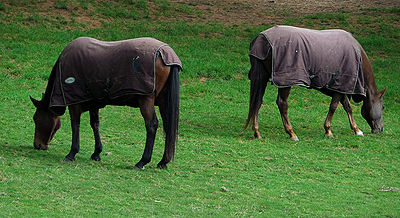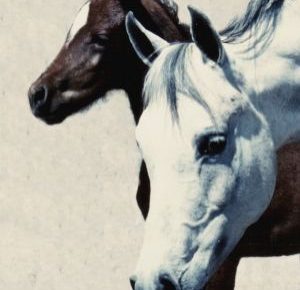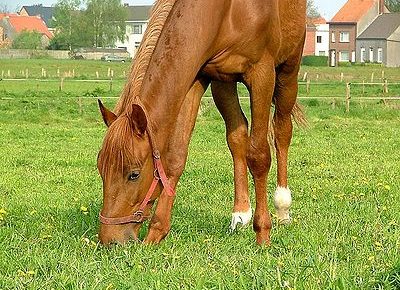
Horses are generally able to tolerate cold weather. But they still need some sort of shelter to retreat to when it’s windy and temperatures drop below 10 degrees Fahrenheit.
The layers of the horse’s coat act to insulate the body. Digesting forage, mainly hay, also produces body heat. A horse’s winter coat begins to appear in the fall as the days grow shorter.
If you clip your horse’s coat for show purposes, blanketing controls hair growth.
When it rains or snows or the weather is icy, below 10 degrees Fahrenheit, blankets can provide warmth and keep your horse relatively dry. Horses coming from a warm climate can more easily adjust to the cold if blanketed. Just be sure your horse is clean and dry before putting on the blanket.
The blankets your choose should be waterproof and breathable or they can do more harm than good.
Have at least two or three of each type of blanket, lightweight and heavyweight. Use the type appropriate for the outdoor temperature.
Groom your horse regularly, even in winter, to keep skin and coat in good condition.
Follow directions for cleaning the blanket. It should be thoroughly dry before using again. This is when having more than one blanket comes in handy. Check that all fasteners are working properly so that the blanket won’t accidentally slip off and frighten the horse.
Make sure your horse always has good quality forage, check water to make sure it’s not icy, have teeth and feet checked. Ask your vet if any additional supplements or care is necessary in winter.
Related Articles



